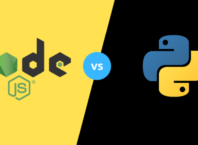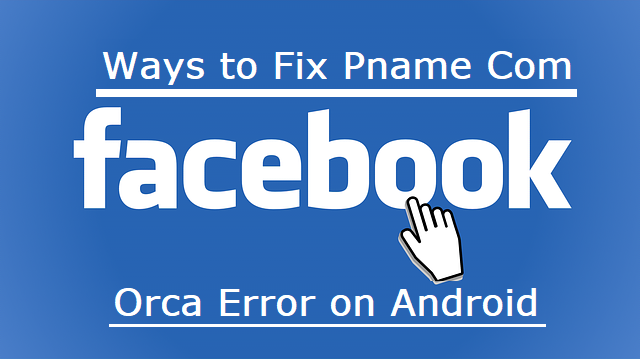Healthcare trends are one of the most important things executives within the industry need to be paying attention to.
They are key in understanding where the industry will be headed over the course of the next few years.
They also highlight the new technology that is bound to reshape the way the industry works, especially as we enter the digital transformation in the healthcare industry.
There is another reason why healthcare executives need to pay attention to healthcare trends, however, and that’s patient needs.
By understanding what the biggest demands are from patients, organizations within the industry can adapt their business models to meet these needs and modernize the way they operate.
At the moment, however, there is a big proportion of healthcare executives who fail to embrace the newest healthcare trends.
One of the big reasons for this is fear.
If they’re going to abandon established business practices in favour of trying something new, they want to know that it works.
Unfortunately, waiting on making new innovations until we know that they definitely work costs the healthcare industry dearly.
According to Digital Authority Partners, the industry would save over $60 billion in the long term if they start making the right technological investments today.
Jumping into the new technology advances in healthcare doesn’t have to be a complete leap into the unknown, however.
Through comprehensive research, we have come up with 4 healthcare trends that healthcare executives must be aware of that have evidence to support making investments in them.
Blockchain
When people think of blockchain technology, they often associate it with cryptocurrency exchanges, but that isn’t all it’s good for.
Recent revelations have also revealed that it has the potential to drive the digital transformation in healthcare by changing the way our digital information is handled.
The technology behind blockchain technology is complicated, and isn’t something a healthcare executive would necessarily need to know.
To put it simply, blockchain is a permanent digital record in the form of an open, immutable ledger.
This means that the information collected via this technology cannot be changed on a whim, and said information is distributed via a network of computers all over the world instead of from one central location.
When this system is successfully implemented, it will automatically detect if people are trying to falsify information within the blockchain.
It does this by comparing the accuracy of new information to previous information recorded on other ‘blocks’ within the system.
This measures combined mean that, as the healthcare industry delves deeper into the digital transformation, the records on patients will remain secure at all times.
This is important because it helps to promote security and means that security breaches of confidential information are less likely, even when the healthcare world becomes more digital.
Wearable Devices
One of the biggest healthcare trends to have stormed the market in recent years has been wearable devices.
They started out as a simple way of tracking exercise for exercise enthusiasts, but in the years since, they have become far more useful.
The continued development of these devices has provided individuals with the ability to monitor their health at home, whether they have a health condition or not.
It does this by allowing people to track measures like sleep, and heart rate.
Take the recent news announcements about Omron HeartGuide. The giant Japanese device manufacturer recently announced launching a new smart watch which has an inflator on the cuff that will let people with high blood pressure measure their heart rate on the go. Of course, the watch has all the standard measurements pioneered by Fitbit (steps, calories, distance, sleep). But they’re also banking on the fact that they have received FDA approval for their new watch to provide accurate heart rate readings.
Data collected about these matters can then be used by physicians to help accurately diagnose someone based on results received within a patient’s own home.
Let’s also take insomnia for example. If you are in a sleep study, you are going to have more trouble sleeping due to the medical equipment involved and the unfamiliar environment you find yourself in.
If you’re diagnosed and treated for insomnia based on information that is collected over a period of time while you sleep in your own home, this diagnosis is likely to be more accurate.
As well as helping to provide information that can lead to more accurate diagnosis, these devices are also invaluable for those with chronic conditions, as it allows them to monitor symptoms from their own home.
It also allows users to receive up to date information about their advice down to the minute, as opposed to information that may have been retrieved in a medical environment a week ago that may no longer be relevant to their current situation.
Mobile Apps
Over the years, mobile applications have become a big part of the medical industry.
They allow patients the ability to find online services that can help them monitor health conditions like diabetes at the click of a few buttons.
This can make people more aware of their daily lifestyle habits, and give them ideas about things they can change.
People are a lot more likely to be honest when they know they cannot be judged by another human, so this could lead to greater improvements in health based on informed changes that are made.
It’s not only patients who benefit from mobile applications, however.
Healthcare executives must be aware that even physicians are benefitting from the digital transformation in healthcare.
One study revealed that 80% of physicians use mobile devices at work, with applications playing a key role in helping provide doctor’s with access to the latest medical information about a wide variety of conditions.
Artificial Intelligence
Artificial intelligence technology has expanded into a number of different industries in recent years, and the healthcare industry is no exception.
At the moment, the main use of this technology in the industry is to analyse large quantities of patient data, with the aim of increasing disease detection in patients.
Results from research have already started to appear, with one study showing that artificial intelligence technology can enable the review and translation process of mammograms to be 30 times faster with a 99 percent accuracy rate.
This removes the need for unnecessary biopsies, and allows healthcare professionals to make decisions which affect the patient as little as possible.
In future, this could mean that invasive investigative procedures in the healthcare industry are a thing of the past.
Not only does this save a lot of money for hospitals and other organizations, but it also provides better patient outcomes for those treated within these organizations.
Imaging Systems
Patient imaging systems are an essential component of modern healthcare, enabling medical professionals to diagnose and treat patients with greater accuracy and efficiency.
These systems have undergone significant advancements in recent years, thanks to the rapid development of technology. One of the most notable advancements in patient imaging systems is the implementation of Picture Archiving and Communication System (PACS) technology.
The impact of technology on patient imaging systems has been particularly significant in the cardiology department.
Cardiologists rely heavily on imaging technologies such as echocardiography, cardiac catheterization, and computed tomography (CT) scans to diagnose and treat heart diseases.
The implementation of the cardiology PACS systems has allowed cardiologists to access and analyze patient images in real time, improving the accuracy and speed of diagnoses and treatment












